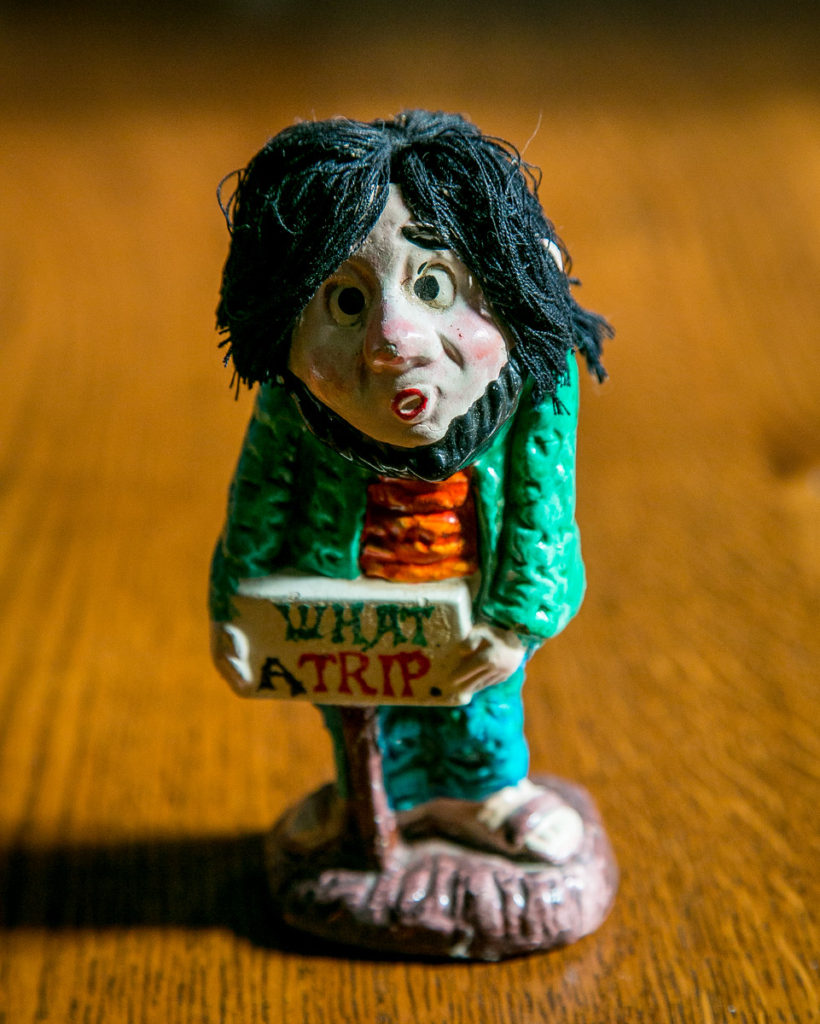
Ever since Dara closed (Shatuck and Cedar), Tuk Tuk at 2468 has been my go-to Thai restaurant.
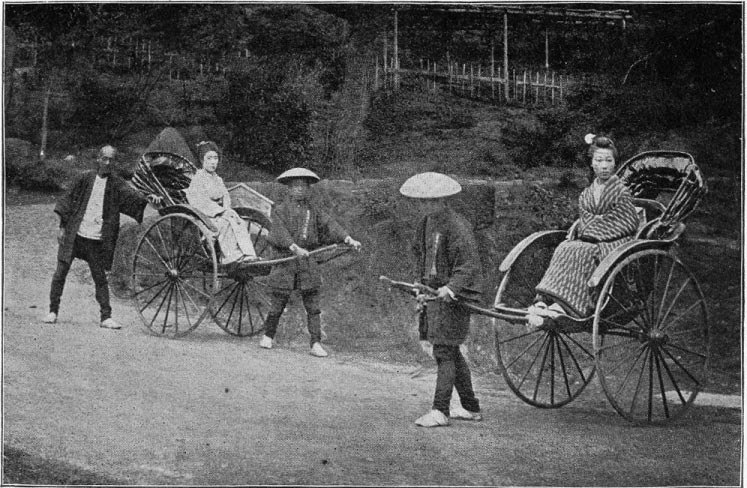

The formal name for a tuk-tuk is an auto rickshaw because it is a motorized development of the traditional pulled rickshaw or cycle rickshaw. “Rickshaw” originates from the Japanese word jinrikisha (人力車, 人 jin = human, 力 riki = power or force, 車 sha = vehicle), which literally means “human-powered vehicle”
Most tuk-tuks have three wheels and do not tilt. Japan has exported three-wheelers to Thailand since 1934. The Ministry of Posts and Telecommunications of Japan donated 20,000 used three-wheelers to Southeast Asia, and many of them arrived in cargo ships at the Klong Toey Port in Bangkok. It is also known as a baby taxi, Bajaj (see below), chand gari, papa, or tukxi.

The auto rickshaw shown above is in Laos. It is a common form of urban transport, both as a vehicle for hire and for private use, in many countries around the world, especially those with tropical or subtropical climates.

As of 2019, Bajaj Auto of Pune, India is the world’s largest auto rickshaw manufacturer.
Variations exist in many countries.

This is a Chingchee in Pakistan. How glorious is this?
Tuk-Tuk is not the only restaurant with a vehicle on display.

This Vespa decorates Donato, 2365 Ashby.
The Vespa is an Italian scooter manufactured by Piaggio. The name means “wasp” in Italian. The Vespa has evolved from a single model motor scooter manufactured in 1946 to a full line of scooters.
From their inception, Vespa scooters have been known for their painted, pressed steel unibody which combines, in a unified structural unit, a complete cowling (he removable cover of a vehicle or aircraft engine) for the engine, a flat floorboard (providing foot protection), and a prominent front fairing (an external metal or plastic structure added to increase streamlining and reduce drag) providing wind protection).
Donato Scotti is the chef. He grew up near Lake Como in the small town of Bergamo, Italy.

Bergamo is in the alpine Lombardy region of northern Italy, approximately 25 miles northeast of Milan, and approximately 19 miles from Switzerland,.
I ate at Donato seven times in the month of December. I got heartburn each time but do not regret it.


The 1953 romantic comedy “Roman Holiday” starring Audrey Hepburn as a royal princess out to see Rome on her own and Gregory Peck as a reporter. comes to mind. Hepburn won an Academy Award for Best Actress for her performance; the screenplay and costume design also won.

Two men who were blacklisted were part of making the movie. Dalton Trumbo co-wrote the script. He did not receive a credit; instead, Ian McLellan Hunter fronted for him. Blacklisted director Bernard Vorhaus worked on the film as an assistant director under a pseudonym.
I don’t understand Japanese iconography, if that is the correct word.

I don’t know the significance of this large stuffed bear at Yi Tea, 2041 University. He is not Kumamon, who represents Kumamoto prefecture in the Kyushu region, southwestern part of Japan.

Kumamon is now “Japan’s most popular bear.”

Nor is he Rilakkuma (リラックマ, Rirakkuma), a fictional character produced by tSan-X and created by Aki Kondo.

After the character’s launch in 2003, Rilakkuma has been featured on stationery and merchandise created by San-X, as well as several collaboration cafes.

Along with picture books and comics, a stop-motion animation series titled Rilakkuma and Kaoru was broadcast in 2019.

It is not Tarepanda (たれぱんだ),a panda character introduced by the company San-X サンエックス (San Ekkusu). The term “tare” (垂れ) means “lazy” or “droopy” in Japanese. it was designed by Hikaru Suemas
The Yelp review includes this photo:

The review fails to provide an explanation for the bear. Yi Tea serves tea and snacks.
The Japan Times points to a possible explanation for the bear. “In Japan, there’s cuteness wherever you look — Hello Kitty, Tare Panda, The Dog, etc., etc. But from next month to September 2003, Japanese people will be able to glimpse the creativity behind the cuteness of that cuddliest of all cuddlies — the teddy bear — when Germany-based Margarete Steiff GmbH celebrates the 100th birthday of its first teddy with an exhibition opening in Tokyo then touring the nation. Since it first introduced its bears to Japan, Steiff has sold 300,000 of its products here.”

Tokyo’s metro system. Credit: Courtesy Colin Green and Megan Small
Japan is batshit crazy for stuffed animals. For $45 a day, you can send your toy on a Tokyo tour. That’ll get you five sightseeing stops, like the Tokyo Tower, The Imperial Palace and the Meiji Jingu Shrine. There’s also a spa day at the Onsen hot springs. That’s $55 for the day. Your stuffed love can see more old temples and shrines in Kyoto. But she has to be willing to stay overnight.”
Enough. I can always ask at the restaurant, no?
In a similar vein:

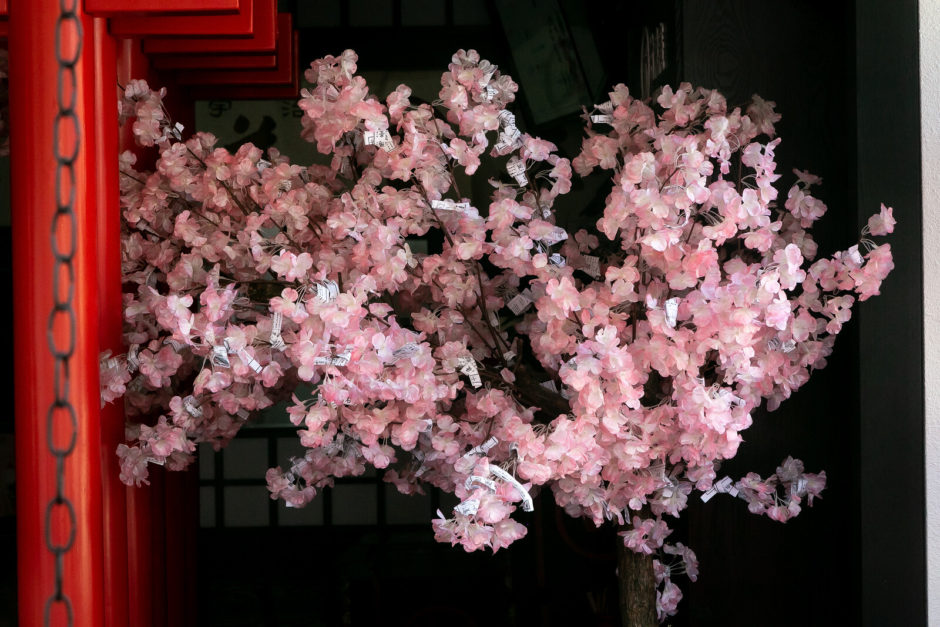
This bunny and these artificial cherry blossoms grace Iamausaam Uji Matcha at 1950 Shattuck, the restaurant’s first American location.

The Smithsonian’s festival blog tells us this about the Japanese celebration of the cherry blossom: “During this season in Japan, people like to have cherry blossom parties with colleagues, friends, and family. A cherry blossom makes people merry. They enjoy eating, drinking, and barbecuing underneath the cherry blossoms. We call this custom hanami. Hanami literally means “watching blossoms,” and the tradition can be traced back at least a thousand years. We bring cooked meals, alcohol, snacks, and sweets, like a potluck party. Schools and offices hold welcome parties during hanami, a chance for people to bond and meet new friends.”

I can’t leave the cherry blossoms without mentioning A. E. Housman’s “Loveliest of trees the cherry now” in A Shropshire Lad. Shropshire is a county in England, bordering Wales to the west, Cheshire to the north, Staffordshire to the east, and Worcestershire and Herefordshire to the south The poem:
Loveliest of trees, the cherry now
Is hung with bloom along the bough,
And stands about the woodland ride
Wearing white for Eastertide.
Now, of my threescore years and ten,
Twenty will not come again,
And take from seventy springs a score,
It only leaves me fifty more.
And since to look at things in bloom
Fifty springs are little room,
About the woodlands I will go
To see the cherry hung with snow.
I remember walking Lily up to Codornices on the weekend when the cherry trees were in bloom. Although I rejected Houseman’s lifespan of 70, I would think about how many more springs I might enjoy. I did this for years in a row. My projected number of springs never went down from ear to year..

It is a themed dessert restaurant.


The website: “Amausaan Uji Matcha, a matcha (a finely ground powder of specially grown and processed green tea leaves).specialty sweet shop that serves Traditional Japanese Dessert.

“Amausaan imported premium grade matcha from Uji Japan. We also bring Japanese Environment and service to here.”
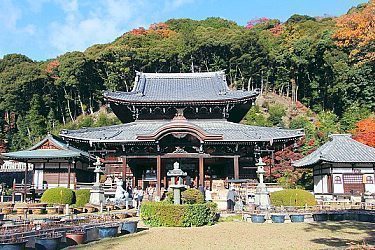
Uji is a city on the southern outskirts of the city of Kyoto. Founded on March 1, 1951, Uji is between the two ancient capitals of Nara and Kyoto. The city sits on the Uji River, which has its source in Lake Biwa.

None of which explains the rabbit.
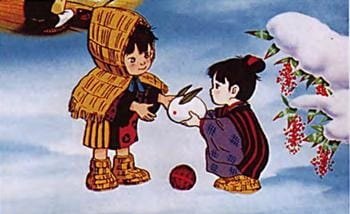
Is it possible that the rabbit is a depiction of Yuki Usagi, the Japanese Snow Hare? I don’t think so.
Year of the rabbit? I don’t think so. The next year of the rabbit will be in 2023. The restaurant identifies 2020 as its first year. That was the year of the rat. Oh well.
Maybe it is just good luck. The Rabbit (Usagi うさぎ) has long been seen as a symbol of good luck.

This is a very good start to a post on quirky restaurant interiors.
But it is just that – a start. Four restaurants do not a complete post make.
If you have any suggestions, please email them to me.
tom@quirkyberkeley.com
I’m serious. I will send out one of our professional photographers – okay, yes, there is only one but he’s Really Good – shoot it, and add to this post, giving you full credit for naming the place.
I showed the photos to my friend. As he started to look thorough them he handed me this:

He looked up after he had finished my rambling about rabbits. “Kerouac made that sketch when he dreamed of publishing On the Road. Kind of cute, no?” He handed another two pages.


He said, “Next time you time On the Road, here’s something to keep in mind. Sketches he made.”
He knew that I will read On the Road again.

I last read it in 2008 when Penguin published the original scroll version.
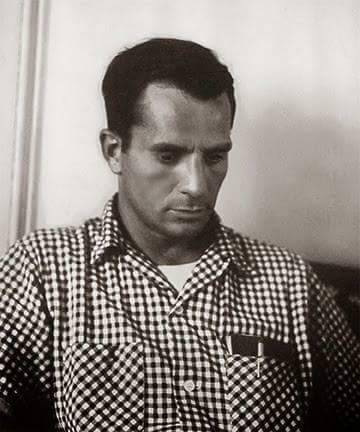
It has survived every reading, even as I age and even as I have read Kerouac’s letters and journals and have a fuller, less romantic sense of who he was.
I thanked my friend and asked for his opinion on the post.
